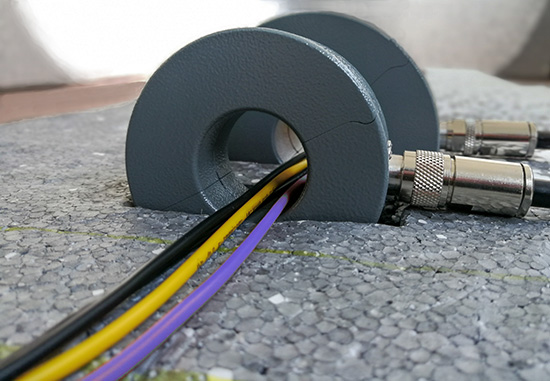EMC Question of the Week: March 21, 2022

In an ISO 11452-4 bulk current injection test, what percentage of the harness current returns on the metal tabletop?
- virtually all of it
- it depends on the DUT
- it depends on the DUT and supporting equipment
- almost none of it
Answer
The best answer is “a.” At frequencies between 1 MHz and 400 MHz (as specified in the standard), the electric and magnetic fields from the harness cannot penetrate the metal tabletop. The moving charge generated on the table must cancel the fields from the harness, so the total current on the table is equal in magnitude and opposite in direction to the common-mode current on the harness. The impedance of the DUT and the supporting equipment influence how the current is distributed on the harness, but not how the current ultimately returns.
When the DUT is not connected to the table through a ground strap, the current is forced to capacitively couple to the tabletop. At low frequencies, this capacitance can be a very high impedance resulting in some very high electric fields for a given current.
From a DUT design standpoint, it is usually a good idea to provide a low-impedance path from one or more connector pins to the chassis ground to minimize the impact of bulk current injection currents. This is true even when the chassis ground is not bonded to the table. Products with no chassis that have to meet BCI requirements, generally must be able to tolerate electric fields on the order of hundreds of volts per meter at the low-end of the BCI frequency range.
Have a comment or question regarding this solution? We'd like to hear from you. Email us at
